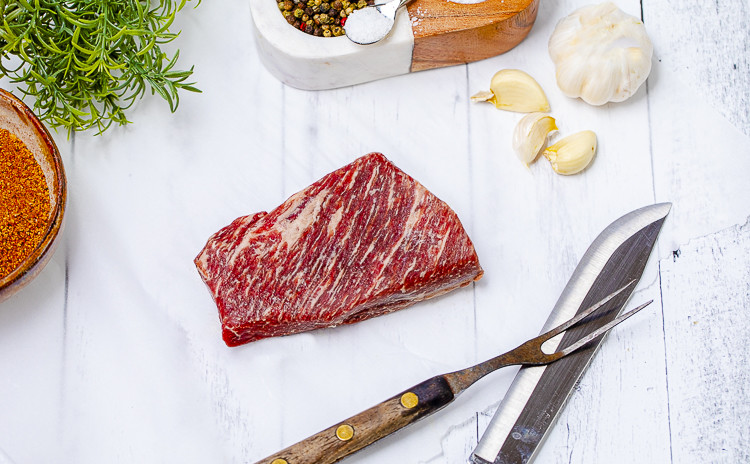Backstrap or Tenderloin?
posted on
April 23, 2024
What are the differences between backstraps and tenderloins? One cut is popular with hunters, and the other with beef.
Are backstraps the same as tenderloins? The answer is very simple: no.
Although the terms seem to be interchangeable when talking about two very popular meat cuts, backstraps, and tenderloins are different because the cuts come from different areas of the animal and may refer to completely different animals altogether. Depending on who you talk with.
Backstraps.
Starting with the backstrap or the loineye eye, the location of the backstrap is in the name. This cut is found parallel to the spine and exterior of the rib cage. The size of this cut depends on the size of the animal. This cut is commonly associated with a deer or any other wild game animal with a similar structure. This muscle is the part of the animal's body that controls its back and allows it to sprint and jump, making it a muscle that is rarely used.
The backstrap, in venison, refers to the boneless meat cut comprising the Longissimus group of muscles. The Longissimus, meaning "longest one" in Latin. The Longissimus dorsi is the thick, tubular, lean muscle that we all know and love, and it extends from the shoulder blades down to the lowest vertebrae.
People prefer cutting beef with the ribs attached to it to make chops. It is also boneless in beef cuts, but it can be left on the ribs for bone-in chops. The ribeye connection is the backstrap containing a few inches of the longissimus dorsi muscle, which is the same tender muscle found in ribeye steaks. Which means most people want this left with the ribeye's.
Backstraps are high in fat, protein, iron, potassium, zinc, niacin, and b-vitamins. Backstraps can be cooked in many ways one can, including:
Loin medallions, roasted loin, butterflied steaks, grilled kebabs, steak tartare, and fajitas.
However, location-wise, it's inaccurate to state that the backstrap is the tenderloin of a deer or beef.
Tenderloins.
The tenderloin or Striploin consists of the oblong muscle called the psoas major muscle. It is accessible from the interior side and can be found inside the body cavity, between the ribs and the pelvis directly behind the kidney, making them a little more challenging to reach. It's encased in a thick layer of crumbly fat known as kidney fat or suet, which can be used in much the same way as lard. Even though the tenderloin is covered by fat, it is incredibly lean and tender. However, tenderloin is often shorter than backstrap in a deer.
Tenderloins are a popular beef cut. It is ranked first in tenderness and juicy texture.
Two common ways to buy the beef tenderloin are untrimmed or trimmed. The untrimmed tenderloin comes with the fat and silver skin still intact. The whole tenderloin is a long, cylindrical muscle. The chain is a thin, sinewy strip of meat that runs along the side of the tenderloin. The first part of the tenderloin is the butt, also known as the head or thick end. This is the larger end of the muscle and is located closer to the rear of the cow. The butt is wider and thicker than the other end of the tenderloin and is often used to make filet mignon steaks.
The second part of the tenderloin is the tail, also known as the thin end. This is the narrower end of the muscle and is located closer to the front of the cow. The tail is thinner and smaller than the butt and is often used to make tournedos or medallions. It is also sometimes used to make beef stroganoff or other dishes where smaller pieces of meat are desired.
Popular cuts from the tenderloin:
Tenderloin steaks - Filet Mignon
Tenderloin Roast - Chateaubriand
Tenderloin Double Roast
Tenderloin Double Steak
Tenderloin for Fondue
Tenderloin for Taco meat - Filete de Res para-Tacos
Ultimately, both cuts are remarkable for their tenderness, leanness, and mild flavor in wild game or beef. When asking for either cut of meat, you will gain a delicious cut but could lose out on other cuts. For example, when ordering tenderloin (Filet Mignon) in beef, your T-bones will become New York strip steaks, and you will not receive Porterhouse steaks. Talking with your butcher or local farmer when ordering specialty cuts is always best. They can walk you through an order to make sure you are getting exactly what you are looking for.




